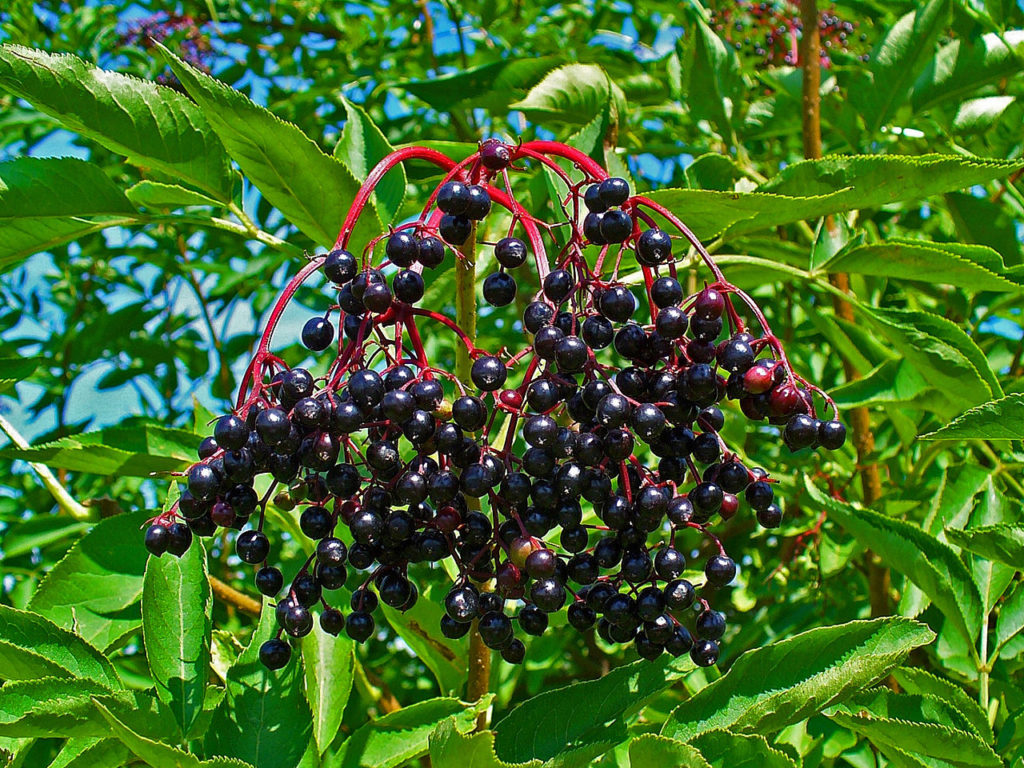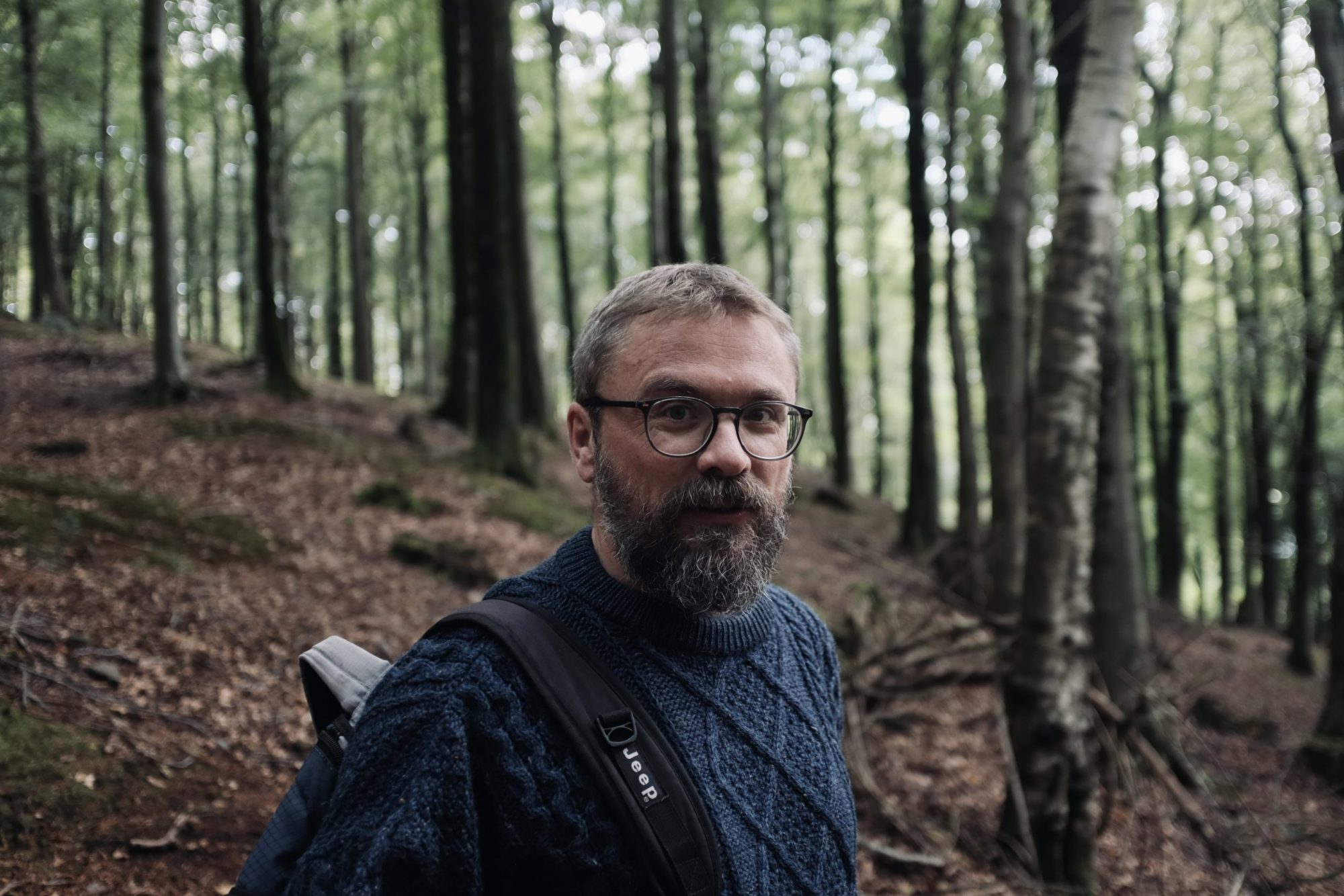Adoxaceae or Moschatel family
The Elder ‘tree’ is a flowering shrub growing to around 6m in height. It produces heads of creamy-white flowers in the spring and dark berries (black, blue/black or red) in the autumn. Both the berries and the flowers are only edible once cooked.
This article covers how to cook elderberries and it’s nutritional benefits and some advice on different cultivars and how to grow them.

Nutrition
Amount needed for 100% Vit C

180g 160g
Amount needed for 100% Iron

540g 925g
Culinary
Elderberry and flower should always be cooked due to the presence of cyaniding glycosides which can cause sickness.
Both the flowers and the berries can be made into cordials and wines.
The flower umbels can be dipped in batter to make fritters. Savoury fritters can also be made by using spiced gram flour for the batter. The berries are often mixed with apples or crab-apples to make desserts, jams and jellies.
The berries also make an excellent ketchup-like sauce known as Pontack Sauce. The sauce is named after the Pontack’s Head a 17th Century London Inn and eating establishment. The sauce is made using a mixture of spices, often including ginger, cloves, allspice and pepper. The berries are cooked like a casserole in the oven with the addition of cider vinegar. The spices are added on the hob before the whole thing is stored away for anything up to seven years, after which time the flavour is said to greatly improve.
Where to find
Elder is a common shrub in lowland temperate climates. It grows on wasteland, in gardens, hedgerows, woodland and in parks.
Flowers- The flowers should be picked on a sunny day, well after the morning dew.
Berries- The berries are best picked fresh. They can be removed from the stalk using a fork.
Remove Elderberries from the stem using a fork
Buying Elderberries
Flowers- Dried flowers can be found in homebrew shops, some health food shops and herbalists. Elderflower cordial is widely available.
Berries- It is rare to find the berries for sale fresh but Elder syrup is commonly found in health food shops and herbalists. Similarly, the dried berries can be found in herbalist and from specialist online retailers.
Peak Season
Northern Hemisphere
Flowers Early Summer
Fruit –Late Summer/Early Autumn
Uncommon in Southern Hemisphere
Cultivars
- Sambucus australis. southern elder; South America)
- Sambucus canadensis (syn. S. nigra ssp canadensis; American elder; eastern North America; with blue-black berries)
- Sambucus mexicana (Mexican elder; Sonoran Desert; with black berries)
- Sambucus peruviana (Peruvian elder; northwest South America; with black berries)
- Sambucus simpsonii (Florida elder; southeastern United States; with blue-black berries)
The antioxidant levels of foods are often measured by Oxygen Radical Absorbance Capacity or
its ORAC value. Most foods with a high
ORAC value are herbs and spices such as cloves, turmeric and oregano. However,
these are consumed in relatively low amounts (typically 5g-10g at most) and
their importance in the diet is often overstated. Elderberries can be consumed
in large quantities when made into desserts, typically more than 100g at a
time. They contain twice the ORAC value of Blueberries and a third more than
cranberries.
Cultivation

It is possible to grow Elder from seed. However, semi-hardwood cuttings, taken from new growth are the preferred method of propagation. Cut a piece at least 1ft or 30cm long. The cuts should be made above a bud on the top and below a bud on the bottom. The top cut should be slightly slanted away from the bud to allow rainwater to run off (and to distinguish the top from the bottom).
The cutting can then be placed at two-thirds of its depth either straight into its final growing position or into a pot containing a mix of sand or perlite and compost. Keep the pot well-watered and plant out a year later.
Large elder cutting can be placed straight in the ground.
Care When Growing
This shrub grows in most soils, wet or dry, but does favour more fertile ground. Elder tolerates a very hard pruning right down to the stump. It needs little care but can attract large numbers of aphids in the summer.
